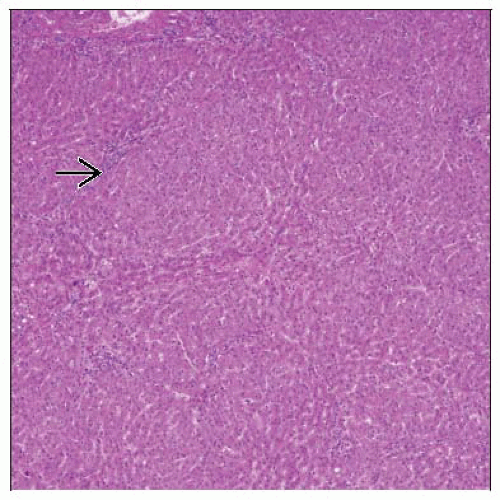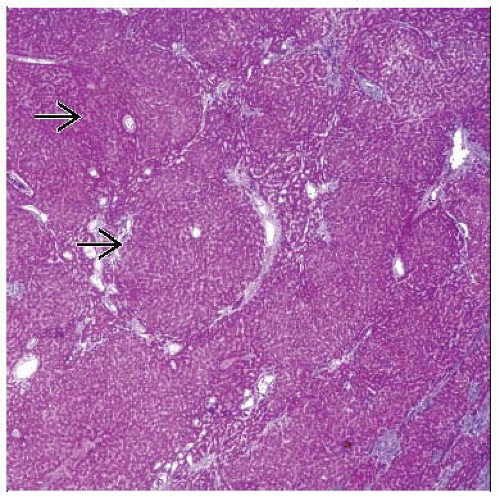Nodular Regenerative Hyperplasia
Sanjay Kakar, MD
Key Facts
Etiology/Pathogenesis
NRH results from changes in hepatic blood flow resulting from obliteration of small portal vein radicles
Clinical Issues
Symptomatic NRH clinically manifests as portal hypertension and its sequelae
Microscopic Pathology
Diffuse replacement of liver parenchyma by small nodules without fibrous septa
Top Differential Diagnoses
Fibrous septa around nodules in cirrhosis distinguishes it from NRH
TERMINOLOGY
Abbreviations
Nodular regenerative hyperplasia (NRH)
Definitions
Pattern of liver injury, associated with many underlying causes, that does not represent a specific entity
Formation of nodules with minimal or no fibrosis
Believed to be related to ischemic atrophy with secondary nodular hyperplasia in areas with good blood flow
ETIOLOGY/PATHOGENESIS
Mechanism
Results from changes in hepatic blood flow resulting from obliteration of small portal vein radicles
Obliterative changes in some portal vein radicles lead to localized areas of decreased blood flow and atrophy
Portal hypertension results from obliterative portal venopathy or sinusoidal compression by nodules
CLINICAL ISSUES
Presentation
More prevalent in elderly population but can occur in children
Underlying disease is often clinically evident long before NRH becomes symptomatic
Symptomatic NRH manifests as portal hypertension and its sequelae: Variceal bleeding, ascites, and splenomegaly
Stay updated, free articles. Join our Telegram channel

Full access? Get Clinical Tree






